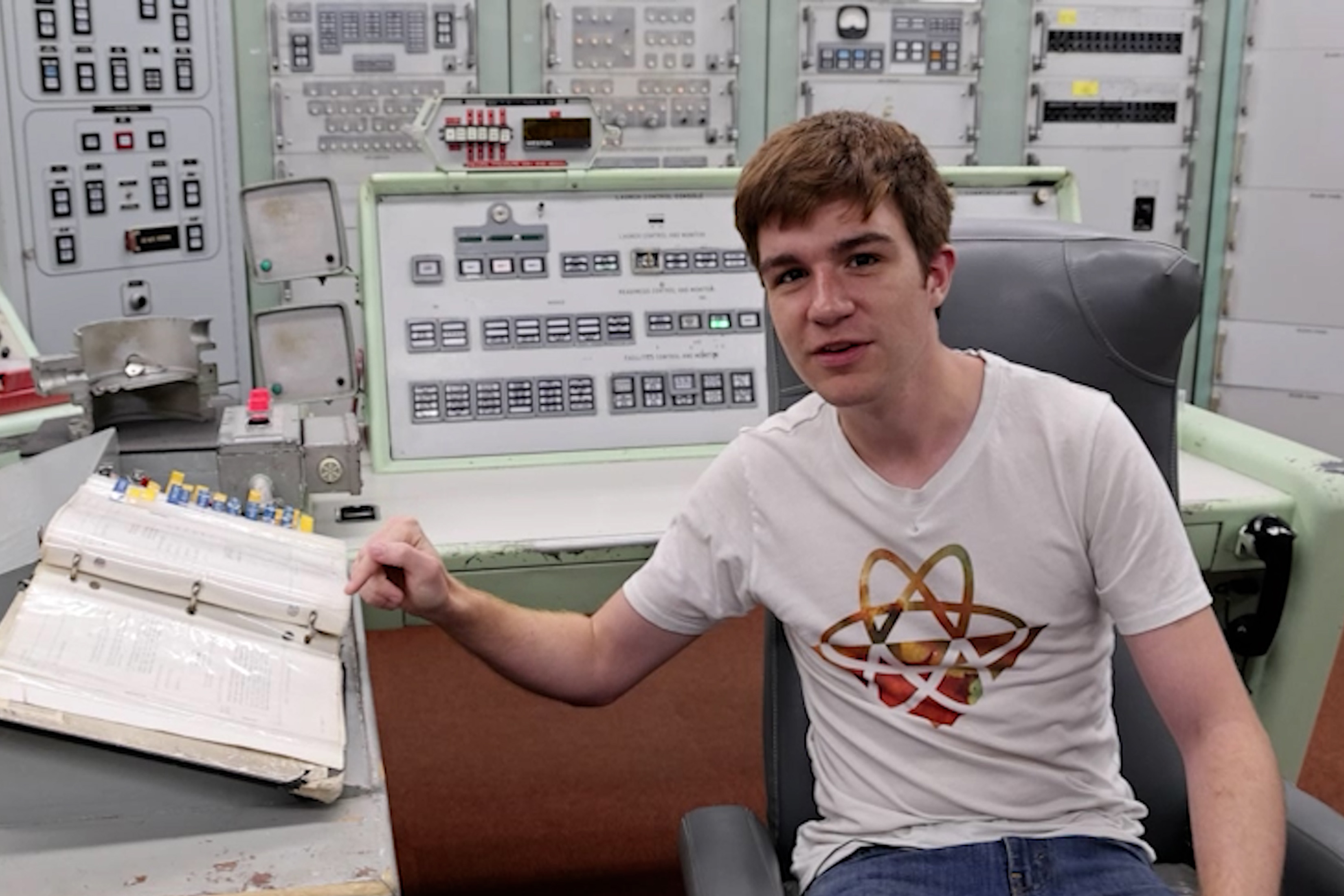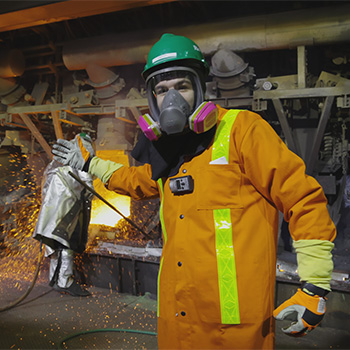YouTuber Explores Frontier of Science
-
-
Slice of MIT
Filed Under
Recommended

James Dingley SM ’23 has explored the depths of a nuclear missile silo, withstood the heat of a roaring copper smelter, and braved the ire of Americans (Dingley is Australian) by explaining that American cheese isn’t actually cheese—all in the name of science.
It’s not his job—but he’s hoping it might be someday. Dingley is the host of Atomic Frontier, an award-winning science and engineering show he produces himself (with a little free help from friends and family). The show, which debuted on YouTube in 2015, has 230,000 subscribers and his videos have millions of views.
Dingley is also a PhD student in space systems engineering at MIT—a dream come true for someone who once feared he would never be able to advance in the field. “I’m very dyslexic. I can’t read well, and my writing is atrocious,” he says. As a child, he questioned how he could succeed in science and engineering if he couldn’t write up research results. Then, his seventh-grade teacher suggested he tackle a science project by making a video.

“It was a terrible video, but I had so much fun doing it that I just kept making videos for classes, and then for myself,” Dingley says. Friends liked his work and encouraged him to post his videos to YouTube.
Space Robotics Research
Meanwhile, Dingley set his sights on an aerospace career. He attended the University of Western Australia (UWA) on a full scholarship, but they didn’t offer a major in aerospace engineering—so Dingley found other ways to pursue his dream. He attended conferences and volunteered for a NASA camp for Perth students, which gave him the chance to learn about rocketry from experts. He then took what he’d learned and launched a rocketry club at UWA to gain firsthand experience.
After earning his bachelor’s degree in mechanical engineering and finance, Dingley came to MIT in 2021 on a Fulbright scholarship for graduate students. He earned his master’s in aeronautics and astronautics with a specialization in space systems engineering and today is conducting PhD research with Professor Kerri Cahoy on robotic systems for assembling satellites.
He’s hoping to become a space robotics engineer—unless, of course, he becomes a full-time YouTuber and perhaps a television personality. “They’re both really exciting career pathways,” he says.
Excellence in Science Communications
Atomic Frontier is hard work—each video takes a month or more to produce—but Dingley enjoys it because it gives him a chance explore questions that interest him, such as why it’s impossible to predict the weather and which rocket emoji would have the best chance of successful flight.
When possible, he shoots on location at sites such as the Kennecott Copper Smelter and the Titan Missile Museum. And to ensure he’s got his facts straight—whether he is explaining the chemistry of cheese or applying a hill-climbing algorithm to the configuration of a keyboard—Dingley enlists subject-matter experts to check his work.
How does Dingley get access to so many experts and sites? “You’ve got to ask people,” he says simply. “People are amazing and willing to give you their time and energy, and people are super, super nice. I’m really appreciative.”
Last year, Dingley’s hard work paid off when the National Academies awarded him a top prize for excellence in science communications for his short Atomic Frontier film “Restoring the Sound of Notre Dame.” Around the same time, he also earned a sponsorship from Vlogbrothers, a YouTube science education series created by John and Hank Green—an honor he’s especially proud of because he grew up watching the brothers’ show. “To have them now watching my videos is crazy,” Dingley says.
Who else is watching? Dingley says his audience skews young, typically 18- to 30-year-olds, and includes many professionals still deciding what to do with their lives. “I’ve had students come and say their research is about one of the videos I’ve done, or they’ve now decided to go into marine engineering because of a marine engineering video I did,” he says. “I love getting that feedback and seeing this actually make a difference to real people.”
Photos of James Dingley at the Titan Missile Museum, top, and the Kennecott Copper Smelter courtesy of Atomic Frontier.






